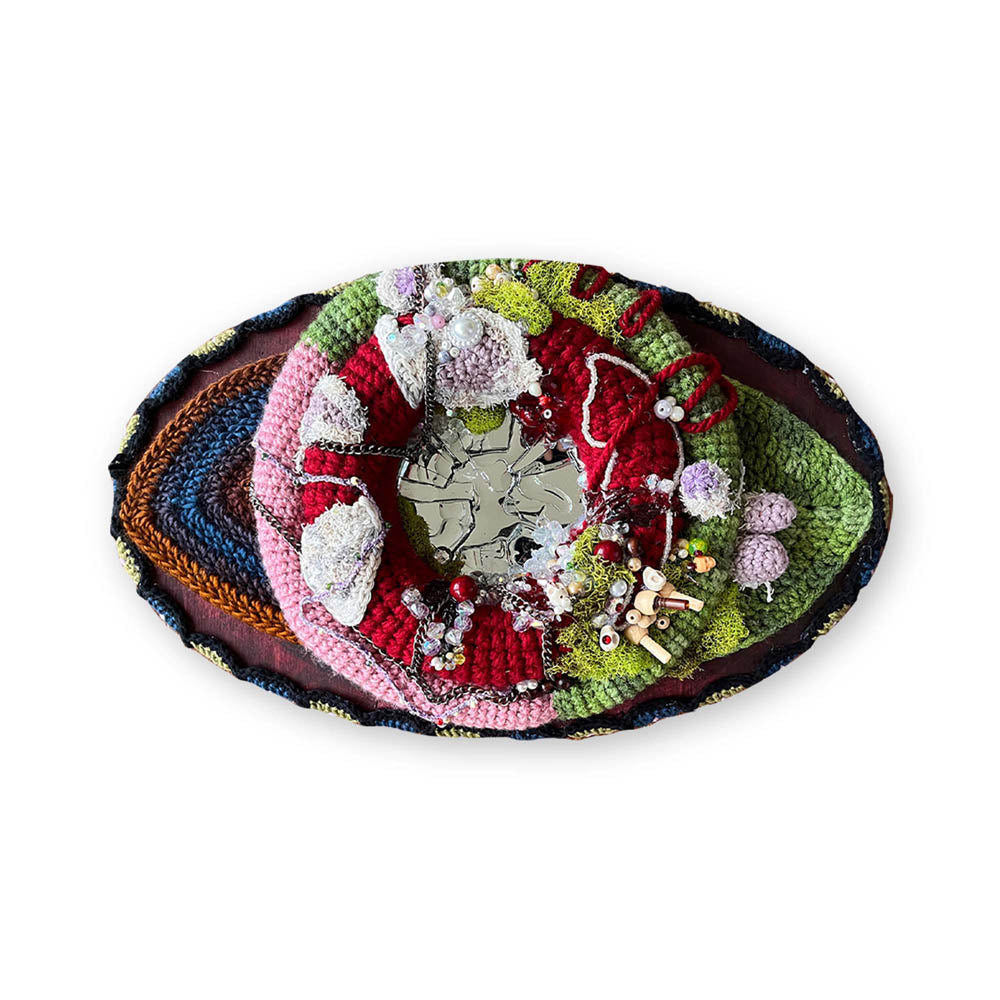A rainy Wednesday morning in Florence found me at the Accademia Gallery where I, like many others, had arrived to see Michelangelo’s The David (1501-1504) in all his triumphant glory. After shuffling off damp coats and umbrellas, visitors are ushered from the lobby into a large vaulted corridor which frames the 500-year-old world-renowned statue at the far end, his open room complete with skylight, arches, and display lights to highlight every angle. It’s a jaw-dropping sight to say the least, and the dramatic presentation easily draws you straight to the spectacle.

An early start plus the damp weather meant that there was enough breathing room in the often jam-packed gallery to take my time admiring, and I walked lots of slow circles around the nearly 25-foot-tall masterpiece. Carved from a single block of Tuscan Carrara marble that Michelangelo had lying around from a project decades before, the colossal sculpture—so lifelike it seems as if he might just blink at you—took the young artist a mere three years to complete. From the strength of his powerful yet composed stance all the way down to the incredibly detailed veins in his hands, the statue sings of immaculate, perfect mastery. When absorbing all of this in person, it’s difficult to think of Michelangelo’s talent as anything other than divinely granted.

After I’d worked my way through my initial awe, I stepped back into the corridor I’d sped through when I first arrived and found something that completely changed my perspective on what makes a master. Spaced along the walls were four smaller statues, also carved by Michelangelo and equally as captivating as their famous roommate, but for the exact opposite reason—these were works in progress. The statues, a series now known together as The Prisoners (c. 1519 - 1534), show muscular male figures emerging from un-carved marble as if they are struggling to get free. They twist, bend, and strain against the rock surrounding them, and the effect on the viewer is a visceral one. Michelangelo began the figures as part of a commission for the tomb of Pope Julius II, but the project was never completed and the striking state where he left off eventually earned them their current name. Although he began his first work in The Prisoners series around 15 years after The David was completed, viewers must pass the series to reach The David, brilliantly highlighting how Michelangelo and his masterpiece went through these same rough, emergent stages.

With that comparison in mind, I became captivated by these frozen prisoners, not only emotionally drawn to them but in awe of their technical mastery. The range of different emotions is incredible, from anguished to resigned to frustrated to pensive, but the most eye-catching of all is the evidence of process. These four writhing figures exemplify the struggle an all-time master of his craft faced while meticulously freeing his creations from blank, solid rock. Their torsos, arms, and legs emerge in painstaking detail compared to their obscured faces, hands, and feet. Looking closely, I could even see the grooves of unrefined chisel marks, which is what stayed with me the most after I left. These works were carved by the same hand as the towering masterpiece just down the hall, a man who was a titan of his craft hailed for creating perfect specimens. But in the end, ironically, it wasn’t his skill that moved me, but the evidence of his effort—the reminder that even a man as talented as Michelangelo was human, too.

We all know the perils of becoming caught up in the pursuit of perfection, whether it’s our own or someone else’s, but more often than we may think, the life-lessons occur in the middle-ground where the struggle and effort show through. People, projects, or pieces of art aren’t inspiring only when they seem to attain effortlessness but when they move us through a shared experience of humanity, of the deliberate action it takes to make deep connections and move beyond the surface. This applies whether it’s a once-in-a-millennium talent like Michelangelo or an aspiring craftswoman exploring her new medium for the first time; it is beautiful to be seen trying. Timeless masterpieces like The David should absolutely be celebrated as the achievements they are, but the next time you catch yourself covering up your humanness in the name of perfection, I invite you to let the chisel marks show. Connection comes at the moment of relatability, and allowing ourselves to share the effort we put into our relationships and passions opens up an entirely new world of possibility and confidence. Instead of hiding the work it takes to create something from nothing, if we celebrate the action, growth, and discipline behind our dreams, we move each other more than perfection ever can.
To learn more, read…
Turner, Richard, Renaissance Florence: the Invention of a New Art, H.N. Abrams, 1997.
Oil and Marble: A Novel of Leonardo and Michelangelo















